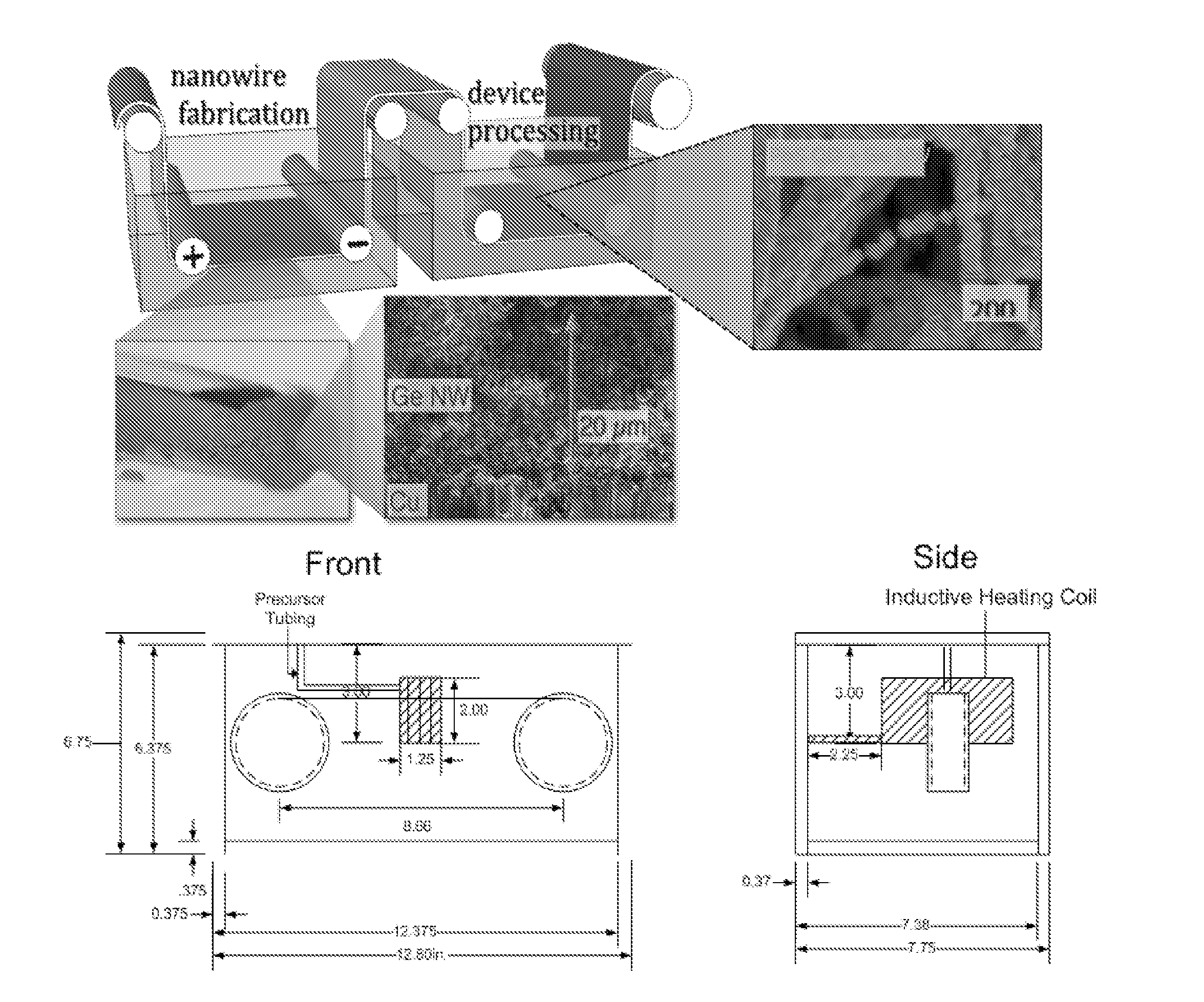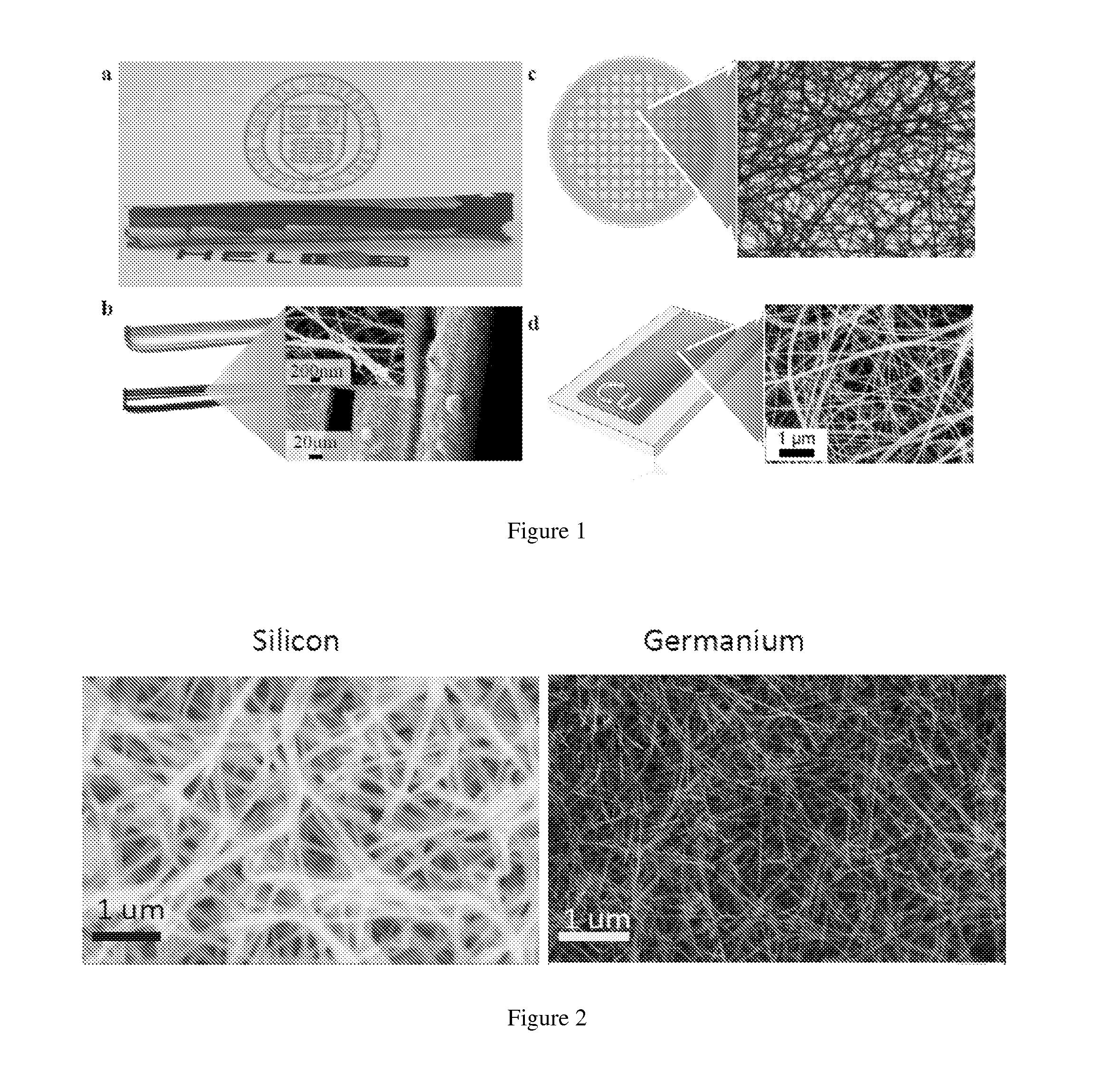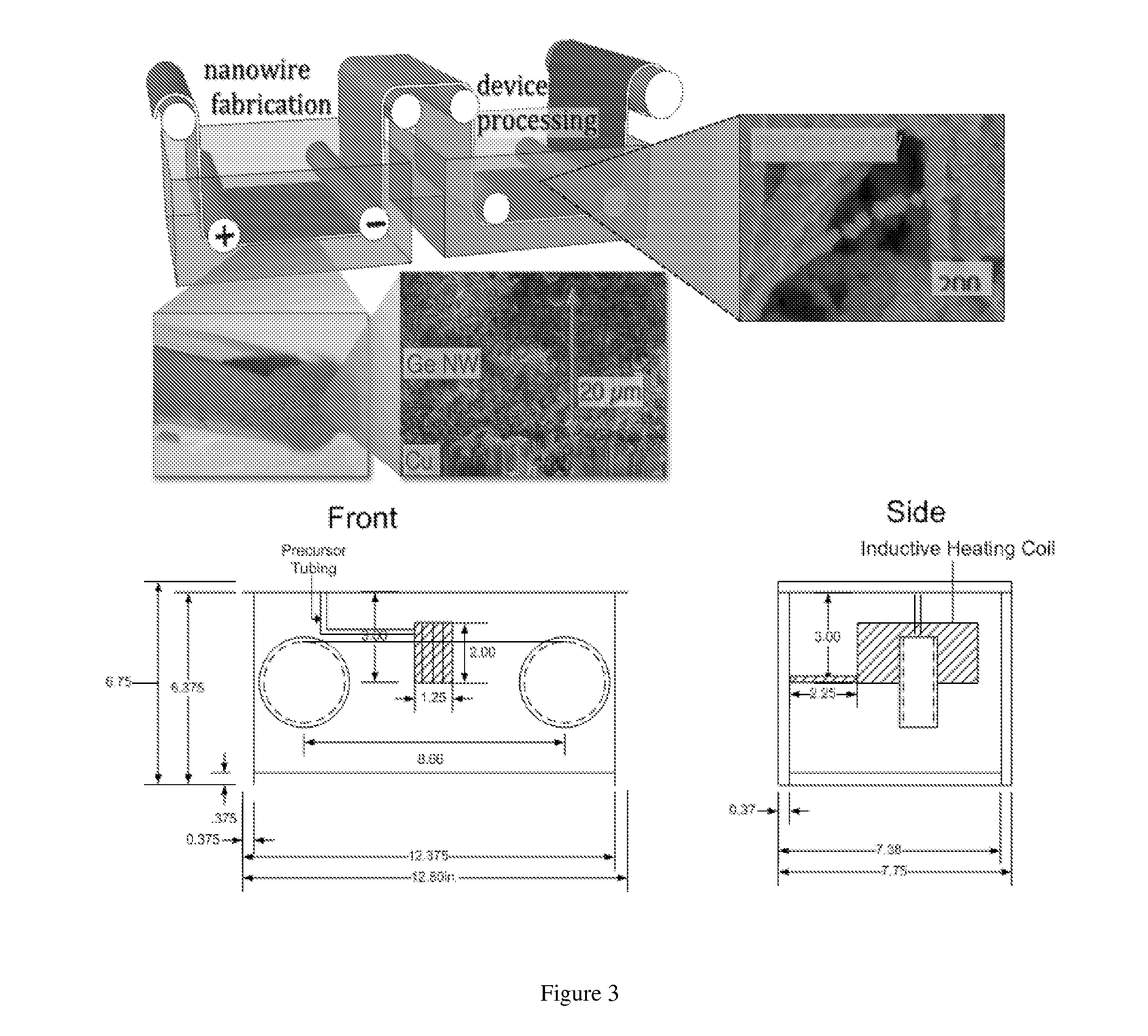Group iv nanowires grown from inductively or resistively heated substrates
a technology of inductive heating and nanowires, applied in the field of group iv nanowires, can solve the problems of affecting the performance of nanowires, affecting the quality of nanowires, and most synthesis methods cannot be realized at a commercially significant scale, so as to improve the growth of nanowires, reduce processing time, and rapidly produce a large quantity of high-quality nanowires
- Summary
- Abstract
- Description
- Claims
- Application Information
AI Technical Summary
Benefits of technology
Problems solved by technology
Method used
Image
Examples
working examples
Example 1
Liquid Phase Reaction—Si
[0085]The patterned geometry (thickness of Cu 100 nm) in FIG. 9 was attached to a power supply and placed in a solution of 100 mM trisilane and squalene. The power supply provided 2.1*107 W / m2 of resistive heating. The reaction lasted seconds. This created the nanowires observed in FIG. 10.
example 2
Liquid Phase Reaction—Ge
[0086]The patterned geometry (thickness of Cu 100 nm) in FIG. 10 above was attached to a power supply and placed in a solution of 100 mM diphenylgermane and squalene. The power supply provided 3*107 W / m2 of resistive heating. The reaction lasted 2.5 minutes. This created the nanowires observed in FIG. 11.
example 3
Vapor Phase Reaction—Si
[0087]The patterned geometry (thickness of Cu 100 nm) in FIG. 9 was attached to a power supply and placed above 300 μl of trisilane in a nitrogen environment. The power supply provided 6*106 W / m2 of resistive heating. The reaction lasted ten seconds. This created the nanowires observed in FIG. 12. This, by extension, should be applicable to Ge nanowires.
PUM
| Property | Measurement | Unit |
|---|---|---|
| temperature | aaaaa | aaaaa |
| temperature | aaaaa | aaaaa |
| reaction time | aaaaa | aaaaa |
Abstract
Description
Claims
Application Information
 Login to View More
Login to View More - R&D
- Intellectual Property
- Life Sciences
- Materials
- Tech Scout
- Unparalleled Data Quality
- Higher Quality Content
- 60% Fewer Hallucinations
Browse by: Latest US Patents, China's latest patents, Technical Efficacy Thesaurus, Application Domain, Technology Topic, Popular Technical Reports.
© 2025 PatSnap. All rights reserved.Legal|Privacy policy|Modern Slavery Act Transparency Statement|Sitemap|About US| Contact US: help@patsnap.com



